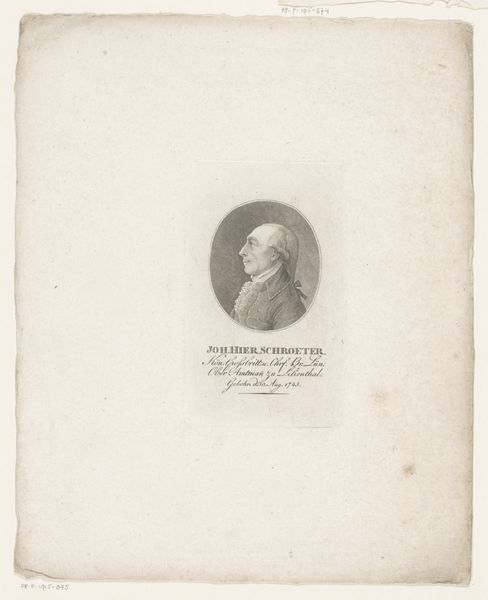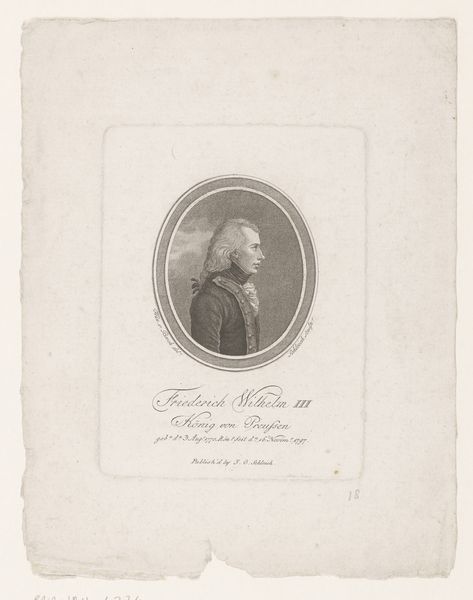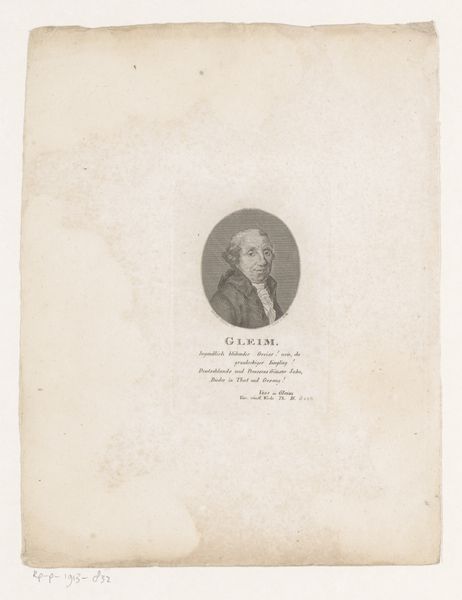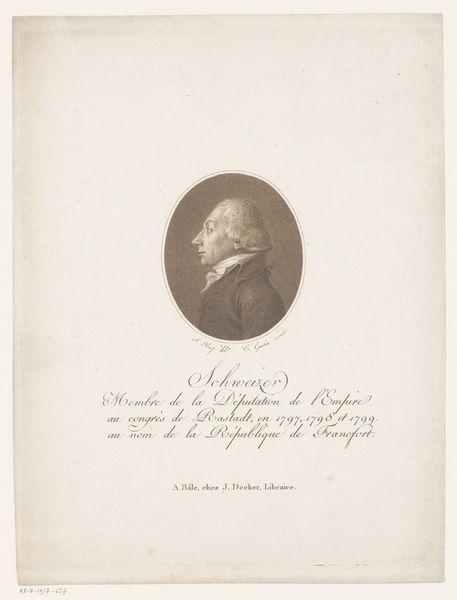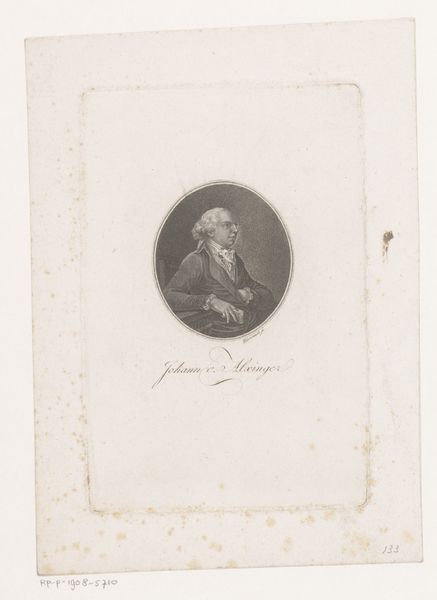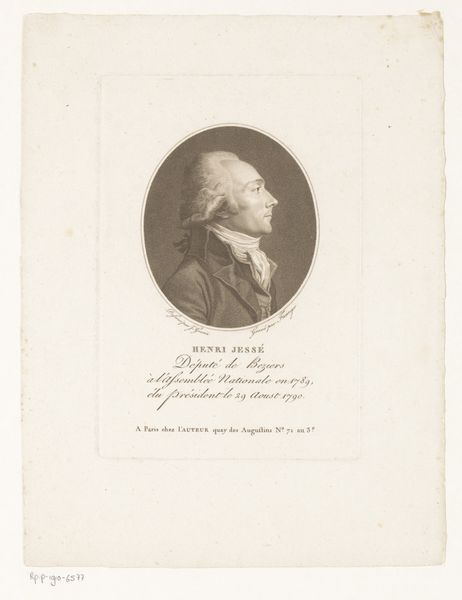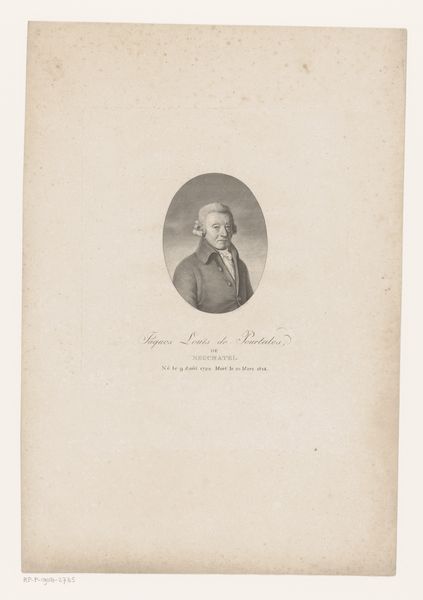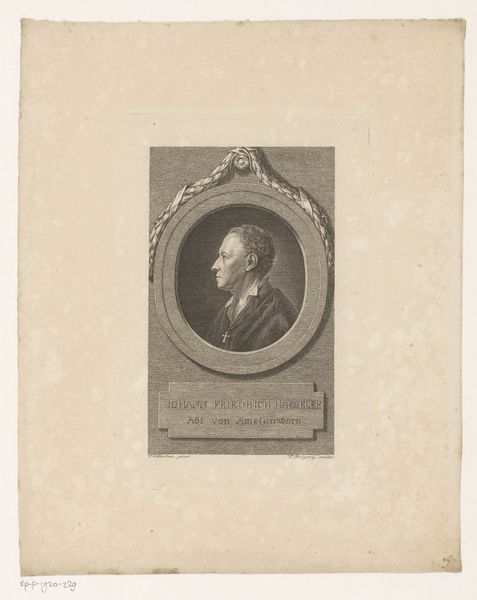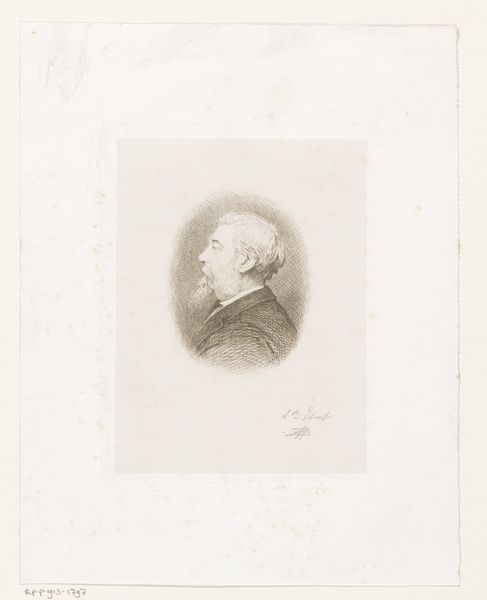
Portret van Heinrich August Ottokar Reichard 1792 - 1816
0:00
0:00
johannfriedrichwilhelmmuller
Rijksmuseum
Dimensions: height 145 mm, width 95 mm
Copyright: Rijks Museum: Open Domain
Curator: This is a print titled "Portret van Heinrich August Ottokar Reichard" by Johann Friedrich Wilhelm Müller. Although the dating is a bit broad, placing its creation somewhere between 1792 and 1816, the artwork resides here in the Rijksmuseum. Editor: It feels almost ghostly, doesn't it? That pale paper and the figure emerging from it in shades of gray... There's an intensity in the eyes, despite the softness of the lines. It reminds me a bit of those early photographs where you can just feel the weight of time. Curator: Absolutely, and given its historical context, that sense of time is critical. This print was likely intended as a portrait for public consumption. Reichard, as noted on the print, was a prominent figure – the editor of "The Travellers Guide." So, its function speaks to the burgeoning print culture and the distribution of images of important public figures. Editor: The inscription itself becomes part of the art then, telling us something crucial about the sitter’s role. Thinking about who had access to these kinds of images raises questions of class and literacy. Were these widely distributed, or aimed at a more elite audience of travelers and intellectuals? And what message was being conveyed? Authority? Sophistication? Curator: Exactly. Consider how such images reinforced hierarchies of status and knowledge. These portraits helped to solidify the positions of figures like Reichard within the public sphere. He’s framed not simply as a man, but as a man of letters, an authority figure within this rapidly expanding culture of travel and knowledge dissemination. The academic art style lends itself to the portrait and suggests that this piece served as propaganda in support of Reichard. Editor: It also feels like it humanizes him, though perhaps idealizes is a better term. Even through this relatively small print, you get a sense of an individual. The details in his clothing, the subtle expression... Did Reichard have agency over how he was portrayed? How did the artist navigate representing an individual while also performing this role of social elevation? Curator: It's a dance of power, definitely. While Müller would have likely strived for a likeness, the engraving inevitably reflects the artistic conventions and the sitter’s own desire to be seen in a particular light. Editor: A carefully constructed public persona captured in ink, circulating through society. Thank you, I'm definitely thinking about this one in a new way now! Curator: A privilege to examine and contextualize, thank you.
Comments
No comments
Be the first to comment and join the conversation on the ultimate creative platform.
